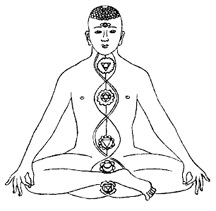Dec 27, 2025
Dec 27, 2025
 "Vedanta is necessary because neither reasoning nor books can show us God. He is only to be realized by super-conscious perception, and Vedanta teaches us how to attain that." Swami Vivekananda. The same quote may be fully applied to The Tantras also. For, in recent years, in his arduous and special sadhanas, Sri Ramakrishna has had demonstrated the truth of all the sixty-four Tantras.
"Vedanta is necessary because neither reasoning nor books can show us God. He is only to be realized by super-conscious perception, and Vedanta teaches us how to attain that." Swami Vivekananda. The same quote may be fully applied to The Tantras also. For, in recent years, in his arduous and special sadhanas, Sri Ramakrishna has had demonstrated the truth of all the sixty-four Tantras.
Tantras are the ancient scriptures, which were meant to spread the light of knowledge of our True Self and bring the humanity out of ignorance. They are also known as Agamas - revelations.
They trace their origin from the Vedas and the Upanishads, and in fact do not deviate from the teachings contained in them. Like Vedanta, the Tantra has its own followers in the true spirit of inquiry and realization of the cosmic unity and power of the Self. Unfortunately, Tantras were tainted with such practices as 'erotic mysticism' and 'black magic'. Be that as it may, it is to be understood that the Tantras in their original and pure forms are as sacred and life invigorating as Vedanta teachings derived from the ancient Indian philosophical thought.
The authorship of the Tantras is credited to Lord Shiva who is believed to have granted this knowledge to his Power - the Shakti - Parvati. She, in turn, made them available to the mankind; Macchindranath and Gorakhnath were the earliest Gurus -Teachers - of this branch of knowledge. It is well known that Lord Buddha was also familiar with the Tantras, and in Tibet there developed a special branch of Tibetan Tantra tradition. Thus, it can be safely believed that the Tantras are ancient to Buddhism; in fact, some references about the Tantras are related to the earliest Veda - the Rig Veda, thereby putting them as old as 7000 years!
Original Tantras are divided into three main groups according to the deity chosen for worship. Thus, related to Vishnu, Shiva, and Shakti came into existence Vaishnava, Shaiva, and Shakta Agamas respectively. However, today, when we talk of Tantras, we mostly mean Shakta - related to Shakti - Tantras. Further, the Tantras are divided into three parts, viz.
Philosophy
The basic philosophical teachings of the Tantras do not much differ from the other currents of ancient Indian thought. They are non-dual in their essence, but in place of Atman or Brahman of Vedanta, the Tantras accept combine of Shiva and Shakti as the unifying Principle of Absolute Truth. There is an essential unity in diversity, and identity of the individual soul with this Shiva-Shakti Principle.
While in Vedanta Shankara mentions power of Brahman as Maya, and takes it to be real and unreal in the last analysis, in the Tantras Shakti is called creative power, God the Mother. In Her womb are the seeds of all future creation, and in fact Shiva, the Absolute, is helpless without this Power. The universe and the creation, therefore, are the attributes or manifestations of this Shakti. Thus, Tantras come closer to philosophy of qualified monism, as expounded by Ramanuja, and may find some problem with Advaita or absolute monism of Shankara.
However, one point must be made clear; this Shakti or God the Mother is not distinct from Shiva, the Absolute. Like sun and its rays, like fire and its power to burn, like coiled snake and snake in motion these two are inseparable. While Shiva is Knowledge-Existence-Bliss Absolute, the Shakti is the manifestation of the Principle at immanent plane as the reality of the whole universe, both sentient and insentient. In the Upanishads this is illustrated as the female spider and her web; the spider weaves her thread out of herself and then lives upon it. God the Mother is both contained and the container!
It is the inexplicable desire for the variety of life with name and form that produces the universe. The philosophical question, which Shankara on one hand and the rest on the other debated, was about the validity or possibility of such a desire to arise in Brahman, the Absolute! How can Absolute Consciousness (the single and the only Reality/Existence/One without the second), which is without attribute or qualities, and is limitless, formless, and infinite desire anything to limit Itself! So says Shankara.
But Tantras take slightly different view interpreting the same scriptural injunctions from a different angle. They maintain that in an attempt to transcend the individual consciousness, the Jiva or individual soul encounters a stage/state where there remain two realities only; one that of the sadhaka and the other of his/her chosen Ideal. The universe is filled with these two entities, which on the final lap/state merge into one Truth, which no one can ever describe. This question can never be resolved till one elevates oneself to the higher plane of consciousness, where the limited ego is transcended and human nature of reason and logic is crossed.
In our next article we cover
Sadhana - spiritual practices, rituals, and worship
18-Jan-2001
More by : Dr. C.S. Shah